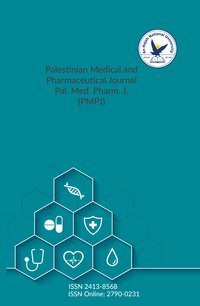Molecular and Physicochemical Studies of MRSA Resistant to Antibiotics: A Known beyond
Article info
2023-09-13
2023-10-11
2024-06-01
235 - 260
Keywords
- bacterial infections
- PBP2a
- MIC
- Antibiotic resistance
- antibiotics
Abstract
As we see in the community, environment, and daily life, bacterial, microbial, and viral infection creates the severe problem. The medical field is continuously worried about the treatment of infections caused by the microorganism. Day by day, the microorganism in na-ture becomes stronger and gains more susceptibility to major infections. The researcher con-tinuously works on the development of new antibiotic to break infectivity of the microorgan-ism. But bacteria have the characteristic to adapt in a new environment by generating re-sistance. Many antibiotics since the discovery of penicillin work on the effects of bacteria for a short duration of time, and after that the bacteria start mutating themselves to overcome the effect of antibiotic. That stage is called antibiotic resistance. At this stage, antibiotic lose their ability to show the effect. The bacteria that show a positive response to gram stain and a negative response to gram stain both seem to be infectious. A resistant bacteria like MRSA becomes more resistant due to the constant mutation of the gene and is susceptible to causing various life-threatening infections. The antibiotics used to treat infection show a less effect at the time of treatment. The review focuses on the problems related to antibiotic resistance and its probable solution by using the derivatives of standard drugs to Methicillin resisted Staphy-lococcus aureus (MRSA) bacteria, based on MIC study reports. The information collected by referring various open-source databases such as PubMed, Chem Spider, ZINC, Google Schol-ar, ScienceDirect etc. from year 2005-2022.
Bhogekar, H. M., Bhole, R. P., Khedekar, P. B., & Chikhale, R. V. (2024). Molecular and Physicochemical Studies of MRSA Resistant to Antibiotics: A Known beyond. Palestinian Medical and Pharmaceutical Journal, 9(2), 235–260. https://doi.org/10.59049/2790-0231.1201
[1]H. M. Bhogekar, R. P. Bhole, P. B. Khedekar, and R. V. Chikhale, “Molecular and Physicochemical Studies of MRSA Resistant to Antibiotics: A Known beyond,” Palestinian Medical and Pharmaceutical Journal, vol. 9, no. 2, pp. 235–260, Jun. 2024, doi: 10.59049/2790-0231.1201.
Bhogekar, Himanshu M., et al. “Molecular and Physicochemical Studies of MRSA Resistant to Antibiotics: A Known Beyond.” Palestinian Medical and Pharmaceutical Journal, vol. 9, no. 2, June 2024, pp. 235–60. Crossref, https://doi.org/10.59049/2790-0231.1201.
1.Bhogekar HM, Bhole RP, Khedekar PB, Chikhale RV. Molecular and Physicochemical Studies of MRSA Resistant to Antibiotics: A Known beyond. Palestinian Medical and Pharmaceutical Journal [Internet]. 2024 Jun;9(2):235–60. Available from: http://dx.doi.org/10.59049/2790-0231.1201
Bhogekar, Himanshu M., Ritesh P. Bhole, Pramod B. Khedekar, and Rupesh V. Chikhale. “Molecular and Physicochemical Studies of MRSA Resistant to Antibiotics: A Known Beyond.” Palestinian Medical and Pharmaceutical Journal 9, no. 2 (June 2024): 235–60. https://doi.org/10.59049/2790-0231.1201.
Molecular and Physicochemical Studies of MRSA Resistant to Antibiotics: A Known beyond
معلومات المقال
2023-09-13
2023-10-11
2024-06-01
235 - 260
الكلمات الإفتتاحية
- bacterial infections
- PBP2a
- MIC
- Antibiotic resistance
- antibiotics
الملخص
As we see in the community, environment, and daily life, bacterial, microbial, and viral infection creates the severe problem. The medical field is continuously worried about the treatment of infections caused by the microorganism. Day by day, the microorganism in na-ture becomes stronger and gains more susceptibility to major infections. The researcher con-tinuously works on the development of new antibiotic to break infectivity of the microorgan-ism. But bacteria have the characteristic to adapt in a new environment by generating re-sistance. Many antibiotics since the discovery of penicillin work on the effects of bacteria for a short duration of time, and after that the bacteria start mutating themselves to overcome the effect of antibiotic. That stage is called antibiotic resistance. At this stage, antibiotic lose their ability to show the effect. The bacteria that show a positive response to gram stain and a negative response to gram stain both seem to be infectious. A resistant bacteria like MRSA becomes more resistant due to the constant mutation of the gene and is susceptible to causing various life-threatening infections. The antibiotics used to treat infection show a less effect at the time of treatment. The review focuses on the problems related to antibiotic resistance and its probable solution by using the derivatives of standard drugs to Methicillin resisted Staphy-lococcus aureus (MRSA) bacteria, based on MIC study reports. The information collected by referring various open-source databases such as PubMed, Chem Spider, ZINC, Google Schol-ar, ScienceDirect etc. from year 2005-2022.
Bhogekar, H. M., Bhole, R. P., Khedekar, P. B., & Chikhale, R. V. (2024). Molecular and Physicochemical Studies of MRSA Resistant to Antibiotics: A Known beyond. Palestinian Medical and Pharmaceutical Journal, 9(2), 235–260. https://doi.org/10.59049/2790-0231.1201
[1]H. M. Bhogekar, R. P. Bhole, P. B. Khedekar, and R. V. Chikhale, “Molecular and Physicochemical Studies of MRSA Resistant to Antibiotics: A Known beyond,” Palestinian Medical and Pharmaceutical Journal, vol. 9, no. 2, pp. 235–260, Jun. 2024, doi: 10.59049/2790-0231.1201.
Bhogekar, Himanshu M., et al. “Molecular and Physicochemical Studies of MRSA Resistant to Antibiotics: A Known Beyond.” Palestinian Medical and Pharmaceutical Journal, vol. 9, no. 2, June 2024, pp. 235–60. Crossref, https://doi.org/10.59049/2790-0231.1201.
1.Bhogekar HM, Bhole RP, Khedekar PB, Chikhale RV. Molecular and Physicochemical Studies of MRSA Resistant to Antibiotics: A Known beyond. Palestinian Medical and Pharmaceutical Journal [Internet]. 2024 Jun;9(2):235–60. Available from: http://dx.doi.org/10.59049/2790-0231.1201
Bhogekar, Himanshu M., Ritesh P. Bhole, Pramod B. Khedekar, and Rupesh V. Chikhale. “Molecular and Physicochemical Studies of MRSA Resistant to Antibiotics: A Known Beyond.” Palestinian Medical and Pharmaceutical Journal 9, no. 2 (June 2024): 235–60. https://doi.org/10.59049/2790-0231.1201.

Since 2022
Cite Score (Scopus): 0.8
Time to First Decision: 3 Days
Submission to Acceptance: 45 Days
Acceptance to Publication: 64 Days
Acceptance Rate: 17%
Why should you
Publish With Us?
An-Najah National University
Nablus, Palestine
Nablus, Palestine
- P.O. Box
- 7, 707
- Fax
- (970)(9)2345982
- Tel.
- (970)(9)2345560
- (970)(9)2345113/5/6/7-Ext. 2628
- [email protected]
- EIC
- Prof. Waleed Sweileh
The Palestinian Medical and Pharmaceutical Journal (Pal. Med. Pharm. J.) © 2024 by An-Najah University, Nablus, Palestine is licensed under CC BY-NC 4.0
News and Views
